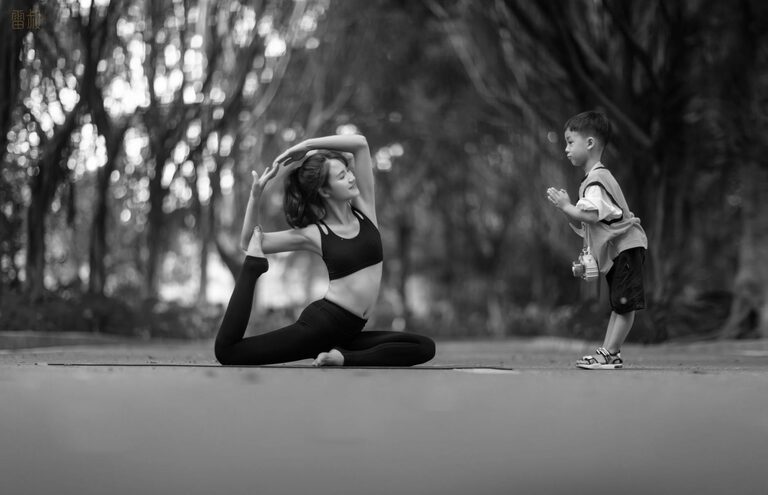In today’s fast-paced world, finding moments of calm can feel challenging. Mindfulness, the simple practice of being fully present in the moment, offers a powerful way to reduce stress and improve well-being. You don’t need special equipment or hours of free time—just a few small habits can make a big difference. This post explores simple mindfulness practices you can easily incorporate into your daily life.
What Is Mindfulness?
Mindfulness means paying attention intentionally to the present moment without judgment. Instead of worrying about the past or future, mindfulness invites you to observe your thoughts, feelings, and surroundings as they are. This awareness helps increase focus, lower anxiety, and promote emotional balance.
Benefits of Daily Mindfulness
Practicing mindfulness daily can:
– Reduce stress and promote relaxation
– Improve concentration and mental clarity
– Enhance emotional resilience
– Foster greater self-awareness
– Improve sleep quality
– Support overall well-being
Even a few minutes a day can have noticeable effects.
Simple Mindfulness Practices to Try Every Day
1. Mindful Breathing
One of the easiest ways to start is focusing on your breath.
How to practice:
– Sit comfortably and close your eyes if you like.
– Take slow, deep breaths in through your nose and out through your mouth.
– Pay attention to the sensation of the air entering and leaving your body.
– When your mind wanders, gently bring your focus back to your breath.
– Just 3–5 minutes can help center your attention and calm your mind.
2. Mindful Eating
Enjoy your meals with full awareness rather than rushing through them.
How to practice:
– Eat without distractions like TV or phones.
– Notice the colors, textures, and smells of your food.
– Take small bites and chew slowly.
– Pay attention to the taste and how it feels in your mouth.
– This exercise helps you appreciate your food and can support healthier eating habits.
3. Body Scan
A quick body scan helps you connect with physical sensations and release tension.
How to practice:
– Lie down or sit comfortably.
– Slowly bring attention to different parts of your body, starting from your toes up to your head.
– Notice any areas of tightness or discomfort without trying to change them.
– Breathe gently as you focus on each part.
– This practice encourages relaxation and body awareness.
4. Mindful Walking
Walking doesn’t have to be just exercise; it can be a graceful mindfulness practice too.
How to practice:
– Walk at a comfortable pace.
– Focus on how your feet feel as they touch the ground.
– Notice the movement of your legs and the rhythm of your steps.
– Take in the sights, sounds, and smells around you.
– If your mind drifts, gently return your attention to the act of walking.
5. Five Senses Exercise
Ground yourself in the present moment by tuning into your senses.
How to practice:
– Pause and name 5 things you can see.
– Note 4 things you can touch.
– Listen carefully for 3 sounds.
– Identify 2 things you can smell.
– Recognize 1 thing you can taste (or savor the current taste).
– This simple exercise quickly helps reduce anxiety and increase awareness.
6. Mindful Journaling
Writing can be a mindful way to process thoughts and feelings.
How to practice:
– Spend 5–10 minutes each day writing about your experiences or emotions.
– Focus on being honest and non-judgmental.
– Reflect on what you notice about your thoughts without trying to fix them.
– This practice encourages self-reflection and emotional clarity.
7. Gratitude Pause
Mindfulness also includes appreciating the positive moments in life.
How to practice:
– Set aside a moment during your day to identify three things you’re grateful for.
– These can be small things like a warm cup of tea or a kind smile.
– Reflect on why you appreciate them and how they make you feel.
– Regular gratitude helps cultivate a positive mindset.
Tips for Building a Mindfulness Habit
– Start small: Even 2–3 minutes a day can be effective.
– Schedule it: Set reminders or tie practices to daily activities (e.g., brushing teeth).
– Be patient: Mindfulness is a skill that improves with practice.
– Stay curious: Notice your experiences without judgment or expectation.
– Use guided resources: Apps, videos, or podcasts can provide helpful support.
Conclusion
Mindfulness doesn’t have to be complicated or time-consuming. By incorporating simple practices like mindful breathing, eating, or walking into your routine, you can create moments of peace and awareness. Over time, these small changes can lead to greater calm, focus, and joy in daily life. Why not start today?
—
Feel free to share your favorite mindfulness practices or tips in the comments below!

